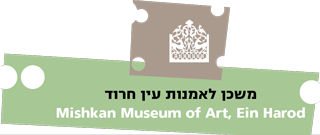Spirit of Man, Spirit of Place
Artists of the Abu-Shakra Family at Ein Harod
Walid, Said, Farid, Asim and Karim Abu-Shakra
Curators: Galia Bar Or, Housni Alkhateeb Shehada
Until:August 5th, 2023
Five artists came from the same family, all born and raised in Ummal-Fahm, is nothing short of astounding. Their impact on theirsurroundings, both inwards and outwards, on the evolution of theIsraeli-Palestinian art, and on the establishment of trust, cannot beoverstated. Over the years, the art gallery founded by two familymembers has become a place of open and diverse exchange, whichnever closed its doors, even in fraught times of tension and war.
Walid Abu Shakra was a trailblazer and a model of walkingalong the path of art. He was followed by Said, who in turn guidedhis younger brother Farid in the trail illuminated by the light of theircousin Asim, who died at a young age and left an indelible mark onthe family and on the local art scene.
The mutual influence is theoutcome of the shared life of four of the fathers’ families. The fathersof the family artists had the same mother, and built their homes onthe same plot of land, where the children grew up together in thecommon yard: Walid (b. 1946), Said (b. 1956), Asim (b. 1961), and Farid (b. 1963). The children spent their days outside, and while thewomen were busy with housework inside the crowded home, theolder children watched over the younger ones in the solidarity of ahamula, of life in an extended family. In 1969, when Walid was in hissecond year as an art student, he set up art classes in the guest roomof his mother’s house, where he taught the family children still lifepainting.New houses were built in Umm al-Fahm, which grew andexpanded, the families scattered between the city’s differentneighborhoods, and the path of art was joined by other familymembers, including the youngest of the Abu Shakra artists, Karim(b. 1982), Asim’s nephew. A prolific and active artist, Karim startedmaking art at a very young age, and Asim’s work was a fount ofinspiration for him.
After Asim’s death, and with a sense of responsibility for thelegacy of Palestinian art, Said and Farid founded the Umm el-FahemArt Gallery. The gallery has been directed by Said since its foundation.To this day, the gallery functions as a bridge for building trustbetween Arabs and Jews. Its exhibitions and collections serve as amodel of inclusion and tolerance towards the disparate perspectivesthat polarize the various populations living in Israel and for the spiritof the gallery as a space that can bring about change.

Walid Abu Shakra, Olive Tree at Ein Jarrar, 1980, drypoint engraving

Asim Abu Shakra, Cactus, 1987, gouache on paper, Discount Bank Art Collection

Said Abu Shakra, Mother Mariam, 2022, mixed media on paper

Farid Abu Shakra, Embroidered Landscape, 2008, engraving and threads on paper


